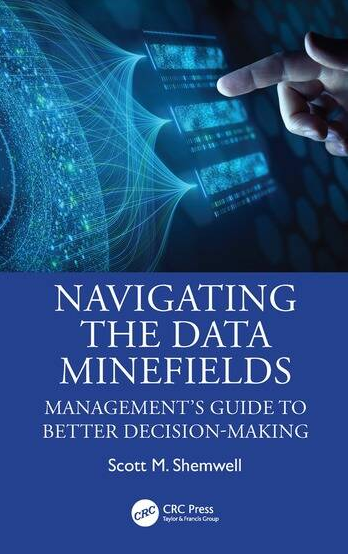“If the ratio is high, you’re an idiot.” – Elon Musk
“Musk developed the ‘idiot index,’ which calculated how much more costly a finished product was than the cost of its basic materials. If a product had a high idiot index, its cost could be reduced significantly by devising more efficient manufacturing techniques.”
Effectively, what he is saying that if the Cost of Goods Sold (COGS) is too high, a product may either become too expensive or not sell well, if at all. This is the basic Supply-Demand curve from Economics 101. He is also indicating that Gross Profit will be negatively impacted as well.
It’s the Cost Structure Stupid
Paraphrasing the candidacy of Bill Clinton in 1992, an organization needs to develop a cost structure that not only lowers Total Cost as low as possible but sustains this approach while assuring the produced product/service is fit-for-purpose.
According to the Corporate Finance Institute, “Cost structure refers to the various types of expenses a business incurs and is typically composed of fixed and variable costs. Costs may also be divided into direct and indirect costs. Fixed costs are costs that remain unchanged regardless of the amount of output a company produces, while variable costs change with production volume.
Direct costs are costs that can be attributed to a specific product or service, and they do not need to be allocated to the specific cost object. Indirect costs are costs that cannot be easily associated with a specific product or activity because they are involved in multiple activities.
Operating a business must incur some kind of costs, whether it is a retail business or a service provider. Cost structures differ between retailers and service providers, thus the expense accounts appearing on a financial statement depend on the cost objects, such as a product, service, project, customer or business activity. Even within a company, cost structure may vary between product lines, divisions or business units, due to the distinct types of activities they perform.”
We see that cost management is much more than simply lowering the procurement costs of parts or subcomponents going into the manufacturing product. It is all about the design of the firm and its culture!
Parasite Control
One of the challenges all organizations face is ‘Cost Creep.’ Management needs to but guardrails in place to assure a low-cost structure business model remains that way. Service firms are just as susceptible as manufactures.
According to one source circa 2000, professional services cost creep aka parasite control can be defined as, “Too many people whose services are not really required trying to use it as their meal ticket.” Originally used in the context of the space exploration sector; however, in this writer’s opinion this issue is not restricted to that one industrial segment.
At one point in my career, I was the executive responsible for a number of large successful simultaneous consulting engagements. Other projects were either not doing as well or winding down. Two things started happening.
First, I discovered that those not on one of my projects were trying to bill their time to one or more projects. Either as a direct ‘accounting code’ attempt or more frequently as a ‘contributor.’ One individual even tried to charge for his local mileage under the premise that while he lived in Houston, he was tied to a practice in Atlanta. Thus, in his opinion he was remote.
Point being, any project can be subject to parasite control. “Cost Creep” is an ongoing managerial problem that must be shut down when found, the real costs clawed back and allocated correctly.
Robust Cost Management
Aggressively addressing costs at all levels is neither idiotic nor stupid. It has always been a business fact of life and as of this writing, the federal government bureaucracy is discovering it is the ‘new normal.’
Moreover, this never-ending pursuit of cost perfection will have a new player shortly. Artificial Intelligence (AI) is rapidly gaining traction in our everyday operations. The audit process is part of cost management, and we already have examples of the use of AI in the audit process. Expect more to come and sooner rather than later.
We have an Operations Management System implementation underway where AI will play a pivotal role in Phase II later this year. We will report back once it has ‘gone live.’
What are your organization’s plans to vigorously manage costs?
Pre order our new book
Navigating the Data Minefields:
Management’s Guide to Better Decision-Making
We are living in an era of data and software exponential growth. A substantive flood hitting us every day. Geek heaven! But what if information technology is not your cup of tea and you may even have your kids help with your smart devices? This may not be a problem at home; however, what if you job depends on Big Data and Artificial Intelligence (AI)?
Available April 2025

For More Information
Please note, RRI does not endorse or advocate the links to any third-party materials herein. They are provided for education and entertainment only.
See our Economic Value Proposition Matrix® (EVPM) for additional information and a free version to build your own EVPM.
The author’s credentials in this field are available on his LinkedIn page. Moreover, Dr. Shemwell is the coauthor of the 2023 book, “Smart Manufacturing: Integrating Transformational Technologies for Competitiveness and Sustainability.” His focus is on Operational Technologies.
We are also pleased to announce our forthcoming book to be released by CRC Press in April 2025, Navigating the Data Minefields: Management’s Guide to Better Decision-Making. This is a book for the non-IT executive who is faced with making major technology decisions as firms acquire advanced technologies such as Artificial Intelligence (AI).
“People fail to get along because they fear each other; they fear each other because they don’t know each other; they don’t know each other because they have not communicated with each other.” (Martin Luther King speech at Cornell College, 1962). For more information on Cross Cultural Engagement, check out our Cross-Cultural Serious Game. You can contact this author as well.
For more details regarding climate change models, check out Bjorn Lomborg and his book, False Alarm: How Climate Change Panic Costs Us Trillions, Hurts the Poor, and Fails to Fix the Planet.
Regarding the economics of Climate Change, check out our blog, Crippling Green.
For those start-up firms addressing energy (including renewables) challenges, the author can put you in touch with Global Energy Mentors which provide no-cost mentoring services from energy experts. If interested, check it out and give me a shout.

